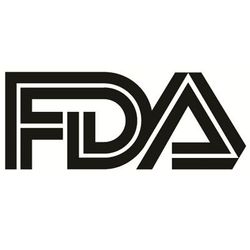
OR WAIT null SECS
Eric Lawitz, MD: FXR Agonists for MASH, What FXR314 May Offer for Safety, Efficacy
Lawitz explains issues with traditional FXR agonists for MASH treatment and how FXR314 differs, potentially offering a more safe and efficacious option.
New phase 2 data suggest FXR314, a novel non-bile acid farnesoid X receptor (FXR) agonist, may be a safe and effective treatment option for metabolic dysfunction-associated steatohepatitis (MASH).
Findings from the phase 2 study were presented at The Liver Meeting 2024 from the American Association for the Study of Liver Diseases (AASLD) in San Diego, California, by Eric Lawitz, MD, medical director and vice president of research and development at the Texas Liver Institute and a clinical professor of medicine at the University of Texas Health San Antonio.
Although FXR agonism has previously demonstrated clinical utility for the treatment of noncirrhotic MASH, development has been limited by poor efficacy and adverse events associated with use of this class of medication.
“FXR314 is interesting in that it's intestinally activated,” Lawitz explained to HCPLive. “Other FXRs have a mixture of intestine and hepatic activation. Here, we're more specifically focused on intestinal activation so it has potency, and the intestinal activation is based on the unique chemical backbone, which allows specificity for the intestines… that mitigates some of the adverse event profile that we've historically seen with FXR agonists yet retains the efficacy.”
The double-blind, placebo-controlled study of FXR314 was conducted in 214 patients with a confirmed diagnosis of MASH who were randomly assigned in a 1:1:1 ratio to 16 weeks of treatment with either 3 mg or 6 mg oral once daily FXR314, or placebo.
Among the cohort, the mean BMI was 36.6 kg/m2 and 37% of patients had type 2 diabetes. The mean liver stiffness was 10.20 kPa and CAP 351.0 dB/M by transient elastography Fibroscan.
FXR314 plasma levels achieved Cmax at 4 hours with a half-life of 60-70 hrs across both doses, with steady-state reached within 14 days. A dose-dependent reduction in C4 of 59% and 71% and increases in FGF19 plasma levels of 186% and 363% were noted with FXR314 3 mg and FXR314 6 mg, respectively.
Results showed a statistically significant reduction in liver fat content from baseline, measured by MRI-PDFF, was obtained throughout the study. The least square mean percent liver fat reduction at the end of treatment was 22.8% (P = .0010) with FXR314 3 mg and 17.5% (P = .0267) with FXR314 6 mg, compared to 6.1% in the placebo group.
Additionally, the proportion of patients with MRI-PDFF reduction of >30% was 29.2% (P = .0023), 32.2% (P = .0020), and 9.5% in the 3mg, 6mg and placebo groups, respectively. The maximum decline from baseline in ALT was 11.0 U/L in 3 mg, 15.5 U/L in 6 mg, and 8.1 U/L in placebo.
Overall, FXR314 was found to be safe and well-tolerated, with similar mild to moderate treatment-emergent adverse events observed across the FXR314 3 mg (68.1%), FXR314 6 mg (73.2%) and placebo (67.6%) groups. Of note, drug-related treatment discontinuation was minimal and similar across treatment arms, and there was no evidence of FXR class adverse events with FXR314 including pruritus (2.8% in FXR314 3 mg, 4.2% in FXR314 6 mg vs 2.8% in placebo) and LDL-C elevation (1.5% in FXR314 3 mg, 4.5% in FXR314 6 mg vs -3.6% in placebo).
Editors’ note: Lawitz has relevant disclosures with 89Bio, Boehringer Ingelheim, Merck, Novo Nordisk, Sagimet Biosciences, AstraZeneca, Bristol Myers-Squibb, Cymabay, Eli Lilly, Gilead Sciences, GlaxoSmithKline, Intercept, Ipsen, Madrigal, Novartis, Regeneron, Takeda, Terns, Viking Therapeutics, AbbVie, and others.
Reference
Lawitz E, Lucas KJ, Kowdley K, et al. 0037 - PHARMACOKINETICS, SAFETY AND EFFICACY OF THE NOVEL NON-BILE ACID FXR AGONIST FXR314 IN PATIENTS WITH METABOLIC DYSFUNCTION-ASSOCIATED STEATOHEPATITIS: RESULTS FROM A PHASE 2 STUDY. Paper presented at: AASLD’s The Liver Meeting 2024. San Diego, California. November 15-19, 2024.


